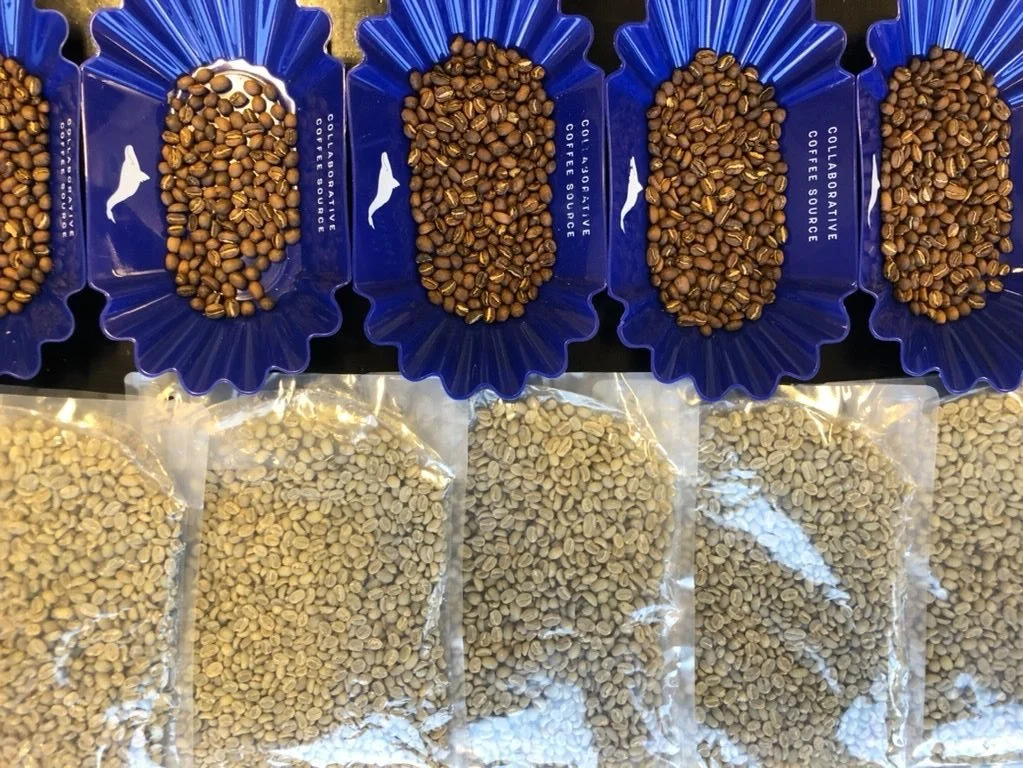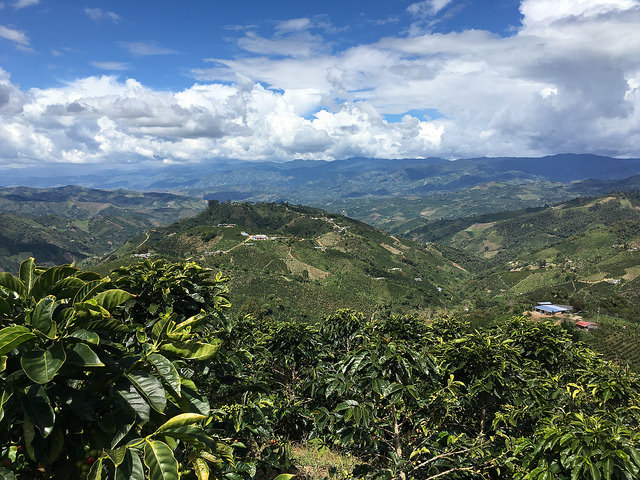Back in 2012, Robert wrote about how the changing Brazilian economy was impacting the business of making specialty coffee from labour availability and minimum wage, to pondering the impacts of strip picking vs. hand picking, to differences in topographic and climatic conditions between microregions and how they potentially affect cup quality. This past August during our regular post-harvest visit, David and I were met with a Carmo de Minas that had been dealing with La Niña early on in this year’s main harvest season. This weather event brought extremely heavy rain, which led to a lot of challenges, including surprises at the cupping table. For the first time, we were faced with defects, which we never would have imagined experiencing at these particular cupping tables. This base assumption alone, of expecting not to come across a single defect in the hundreds of cups that were presented to us, speaks to the incredible reputation that Carmo Coffees has built over the years. And why we continue to work proudly alongside this team.
Carmo Coffee's brand new cupping lab
La Niña and the 2016 Harvest
There’s no getting around the fact that in comparison to previous years, finding this year’s offerings proved to be an unexpected challenge. Great coffees were there for the taking but we’re used to dealing with the luxury problem of getting to pick and choose amongst dozens of great lots. This year, there were quite a few phenolic defects to contend with, which Luiz Paulo (co-founder of Carmo Coffees, coffee farmer and researcher) hypothesized had developed as a result of the severely increased volume of rain, which leads to an environment ripe for bacteria growth. In Brazil, coffee cherries dry on the trees (due to the common practice of strip picking), so when the rains come, the cherry skin stretches and tears a bit allowing some outside water in as the fruit swells. As the cherry shrinks back down and the skin of the fruit heals over, there is a higher chance of phenol forming inside the coffee.
One of the many frustrating things about the phenol defect is that it is not something one can physically see on the surface of the bean. It is a cup character flaw that makes a coffee taste medicinal, metallic and astringent.
To be clear, the Carmo team does an outstanding job cupping, sorting and milling every single lot they work with. But this year the team was faced with the battling: 1. Cupping through and finding the best lots possible amongst an overall disappointing harvest and 2. Dealing with an elusive defect, since phenol is not something that can visually be detected.
Curiosity as an Indicator of a Quality Mindset
There are many reasons we have confidently worked with the Carmo team over the years, above and beyond the awards and accolades their coffees and partners’ coffees have received throughout various cupping competitions year after year. Despite the fact that their reach (with the number of famer partners they work with) and the volume they export has grown exponentially, the team remains resolutely committed to being amongst the most innovative coffee exporters in the world. One example is their continued collaboration with Dr. Flávio Borém of Lavras University, a coffee scientist who studies everything from how microclimates impact cup quality to how different types of packaging (e.g. vacuum vs. grain pro) best contribute (or not) to a green coffee’s shelf life. He even recently published a very well-received book about the research he’s done on packaging, along with other findings on how post-harvest activities contribute to green coffee quality.
Actively engaging with, along with supporting, this kind of research is a marker of at least a savvy specialty coffee exporter. But actually contributing to specialty coffee development is a different category altogether and is an even bigger draw for us.
Luiz Paulo: Coffee Exporter, Experimenter, Maverick
One thing is supporting research efforts and using evidence-based knowledge in forming best coffee farming, milling and export practices. If an exporter were to stop here, it’d be safe to say that you’re working with a reliable and trustworthy partner. When that partner goes further and has ambitions to disruptand challenge basic assumptions about what a coffee sector can do, well, now we’re getting into straight-up maverick territory.
Brazil is known for being an efficient coffee producing country, but it’s no secret that it’s also perceived as being a bit of a boring origin with good but uninteresting coffees. Its well-developed infrastructure, professionally managed farms and high yielding trees are a double-edged sword within the specialty coffee community, which favours the most innovative, boutique and most unique. Perhaps there’s a way to achieve both?
Without giving too much away, since things are very much in the development stage, Luiz Paulo introduced us to some very promising and exciting experiments he’s conducting at his mother’s farm. He labels this series of projects “New Flavors” and it encompasses the latest innovations in processing and varieties. We’ve already selected and offered (based on blind cupping) two lots based on green/unripe coffee cherries that underwent special fermentation techniques to draw out more sugar content. These coffees cupped as well as many other pulped natural we’ve chosen and the fact that this technique can potentially add value to coffee that is normally discarded is an enticing prospect. Especially when the industry is faced with declining worldwide Arabica production due to the ever increasing consequences of climate change.
In two years, Luiz Paulo will be harvesting the first of the new varieties he’s been cultivating under New Flavors. Very much looking forward to cupping and sharing those with you in the near future!
Melanie
Luiz Paulo with yellow bourbon 42, the very first strain of yellow bourbon produced in Brazil












